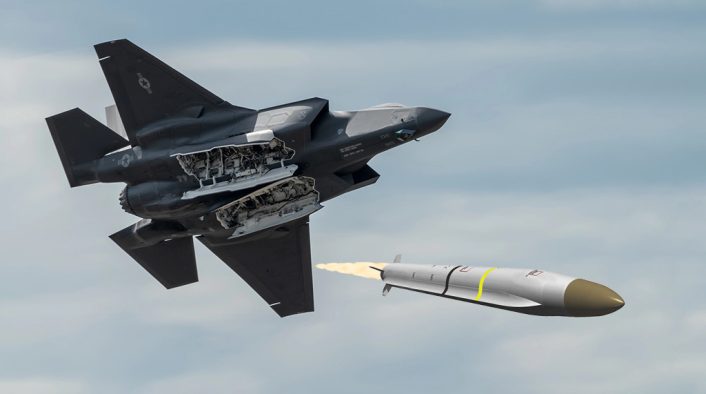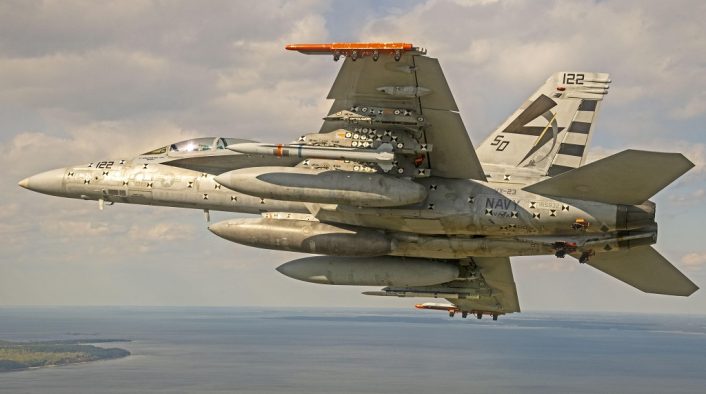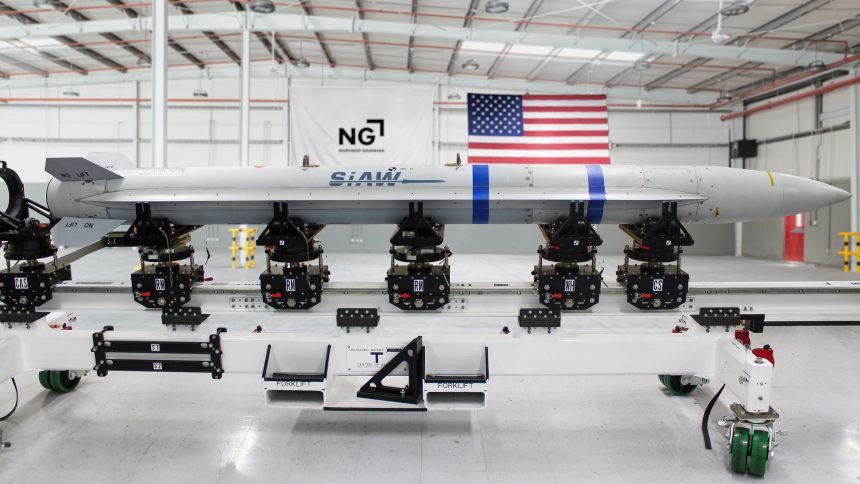The delivery of the first test missile to the Air Force marks the beginning of flight testing to verify the safe interaction with the aircraft through captive carry and separation testing.
Northrop Grumman announced on Nov. 18, 2024, the delivery of the first Stand-in Attack Weapon (SiAW) test missile to the U.S. Air Force. The inert weapon will be used to verify that the aircraft can safely carry the weapon and separate from it after the release during flight testing.
In Sep. 2023, the service has awarded Northrop Grumman an approximately $705 million contract to deliver the new generation air-to-ground weapon that will be carried internally by the F-35A. SiAW will provide strike capability to defeat rapidly relocatable targets as part of an enemy’s anti-access/area denial environment.
The SiAW builds on the Advanced Anti-Radiation Guided Missile-Extended Range (AARGM-ER), currently in an advanced development phase with the U.S. Navy. While they appear identical externally, SiAW is an all-new weapon, which will be used against a broader range of anti-access/area denial (A2/AD) targets beyond air defense radars.
The company said is leveraging its weapons systems design, development and production expertise to deliver SiAW on the Air Force’s digital engineering priorities and accelerate capability for the warfighter. When the contract was awarded, Northrop Grumman said that it would develop the weapon, conduct platform integration and complete the flight test program over the following 36 months.

The SiAW program
The SiAW program previously awarded contracts in 2022 to Northrop, Lockheed Martin and L3Harris, and then in 2023 two contracts to Lockheed Martin and Northrop Grumman for the final stage of the weapon’s first phase. Phase 2 development is a continuation of the Air Force requirement for this first-of-its-kind Middle Tier Acquisition large weapon program focused on digital engineering, Weapon Open System Architecture and agility.
Phase 2 consists of two primary increments: Phase 2.1, which concludes with a guided vehicle flight test, and Phase 2.2, which concludes with three additional flight tests and the delivery of SiAW leave-behind prototype missiles and test assets. Once this phase is completed, the program is expected to transition to a major capability acquisition before being fielded on the F-35A Lightning II and possibly on the B-21 Raider stealth bomber.
The Air Force is targeting an initial operational capability by 2026, with plans to buy 400 of the missiles by 2028 and eventually up to 3,000 in the following years. In the meanwhile, the service will also get the AARGM-ER as an interim capability. SiAW is expected to be employed against targets such as command-and-control sites, ballistic missile and cruise missile launchers, GPS jamming systems, anti-satellite systems, other high-value or fleeting targets.
The SiAW is expected to be faster than both the current AGM-88 HARM and future AARGM-ER and with a greater, yet unspecified, range. The weapon is expected to have multiple sensors and high-resolution GPS guidance, in addition to open architecture interfaces.

Latest details
Since the award of the program, not much has been divulged about the new weapon. The statement released by Northrop Grumman for the delivery of the test missile was also very short and without new details.
The Air Force, however, included a new description of the weapon in the FY2025 budget’ Justification Book:
The Stand-in Attack Weapon (SiAW) system will provide capability to strike rapidly re-locatable targets that create the Anti-Access/Area Denial (A2/AD) environment for 5th Generation and Future Advanced
Aircraft. SiAW targets include Theater Ballistic Missile Launchers, Land Attack and Anti-Ship Cruise Missile Launchers, Jammers, Anti-Satellite Systems, and Integrated Air Defense Systems. The SiAW missile
system is being developed under a Digital Acquisition (DA) approach that emphasizes agility and innovation. Interim combat capability is pursued through the Navy’s Advanced Anti-Radiation Guided Missile-Extended Range (AARGM-ER) program with improved warhead/fuze and F-35 integration (including Universal Armament Interface [UAI] and Mission Planning).
The service plans a total acquisition of 3,000 SiAW weapons, costing just shy of $9 billion. The document also included a mention of the interim acquisition of the AARGM-ER by the service:
FY25 funding will procure 128 AARGM-ER AUR missiles and associated support costs.
The total cost projected for 2025 is of $173 million. In the same page there is also a mention of a previous request for 42 weapons in 2023, for a total of $78 million, and 14 in 2024, for $42 million. The 3,000 weapons appear to include also the AARGM, with the acquisition of the actual SiAW starting in 2026 after IOC.









